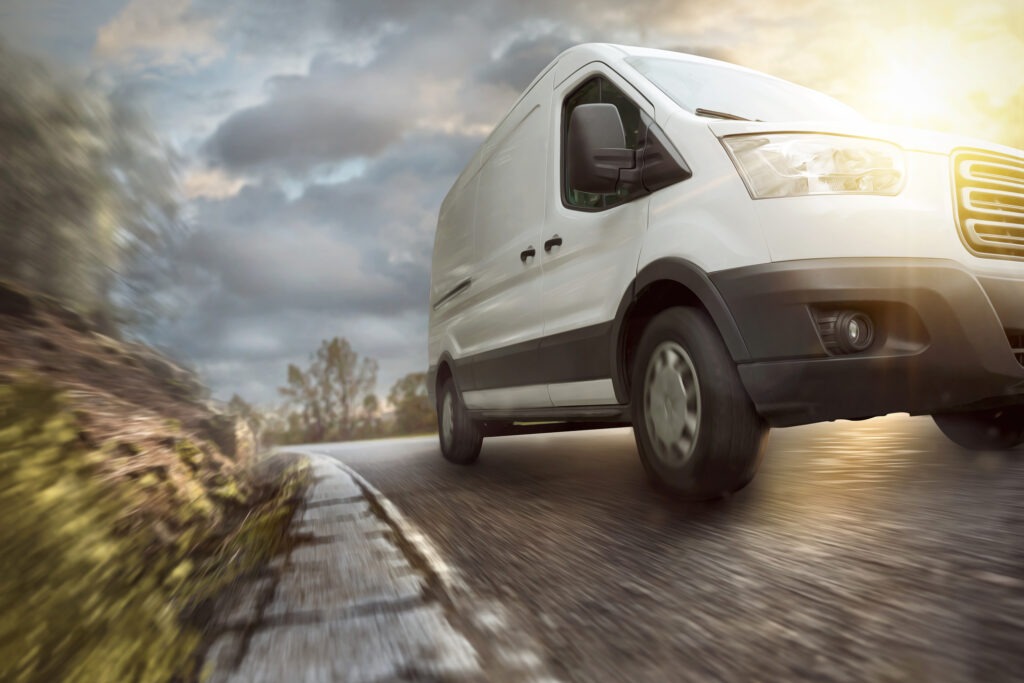German new-car market gets off to strong start amid unclear 2024 outlook
08 February 2024

The German new-car market had its strongest start to a year since 2020, with every powertrain seeing growth in January. However, these figures do not tell the full story. Tom Hooker, journalist at Autovista24, dives into the data.
The German new-car market recorded its best January in four years, as 213,553 units took to the roads in 2024, up 19.1% on last year’s total. However, this was down 11.7% from the delivery peak in December 2023.
The latest data from the Kraftfahrt-Bundesamt (KBA) shows that Germany had its strongest start to a year since 2020, with each powertrain seeing growth.
However, the figures from the start of last year were particularly poor, making for the second-lowest tally since 1991. Therefore, this year’s results have been comparatively amplified. Furthermore, it is the country’s lowest registration score since April 2023.
The pressure of supply chain issues and COVID-19 also had a negative impact on the market in 2022 and 2021. Compared to the pre-pandemic period, last month was 19.6% below 2019 figures.
By the end of 2024, EV-volumes.com (part of Autovista Group) forecasts year-on-year new-car market growth of 1.3% in Germany, equating to 2.88 million new units, still just shy of the 3 million threshold. This would be a more marginal gain compared with 2023’s 7.3% increase when the market was still recovering from supply chain issues.
The VDA also forecasts a minimal change but in the other direction. The automotive body expects to see a 1% downturn to 2.8 million deliveries, resulting in nearly a quarter less than in 2019.
BEVs bracing for fall?
Germany was braced for a repeat of 2023’s disappointing January which was driven by a slump in electric vehicle (EV) registrations. This was caused by the removal of plug-in hybrid (PHEV) incentives and a reduction in battery-electric vehicle (BEV) subsidies. EVs fell by 32% during this period in contrast to January 2022.
Fast forward to January 2024, and the same phenomenon was expected as BEV incentives were suddenly removed in the middle of December. As it turned out, the powertrain produced mixed results.
Compared to December 2023, BEVs saw a dramatic drop of 58.9% last month, but with the usual delivery spike alongside the incentive cut, this was to be expected. However, when compared with January 2023, the market experienced growth of 23.9% with 22,474 registrations.
All-electric vehicles accounted for 10.5% of all passenger cars in January, an improvement from 10.1% in 2023. Yet this was still over 12 percentage points down on December’s share.
PHEVs had a slightly brighter start to 2024, recording a 62.6% growth year on year, but dropping 19.6% from December’s figure. 14,394 units gave the powertrain a 6.7% market share, up from 4.9% last January.
A fifth by 2024
The latest forecast from EV-volumes sees BEVs taking over a fifth of the overall German market share by the end of 2024. The powertrain is predicted to make up 21.2% of total registrations, from an 18.4% share in 2023.
All-electric models are expected to account for just under a quarter of all vehicles taking to Germany’s roads in 2025. This figure is then expected to surge in the following years, as manufacturers make the switch to zero-emission vehicles.
BEVs are predicted to account for over half of the market’s deliveries by the end of 2029, capturing over 75% of the market in 2031. EV-volumes then expects this to accelerate to 93.6% in 2035.
PHEVs meanwhile are expected to remain stable at a 6.2% share in 2024. However, the powertrain’s outlook contrasts starkly with its all-electric sibling, despite a predicted market share increase to 6.3% in 2025. This number is likely to dip to 4.6% in 2030, fading further until it reaches a 1.1% share in 2035.
A mixed year ahead
The VDA is expecting a mixed 2024. It sees deliveries of BEVs slowing by 14% year on year, amounting to some 451,000 units. But it also foresees a 5% growth in PHEVs, with 185,000 of these units expected to take to the roads.
‘The significant increase belies the real situation in the automotive trade. A year ago, we had an extremely bad January because many registrations of electric vehicles were brought forward due to the reduced subsidy from 1 January 2023,’ said ZDK president Arne Joswig.
‘In this respect, this special effect is not a signal for a new beginning. This is because order rates remained at the low level of the same month last year. It is our guiding principle to drive forward the path to climate neutrality with commitment.’
According to the KBA, Germany’s CO2 emissions from new passenger car registrations dropped by 4.1% last month. Nevertheless, more encouragement is needed to keep fleet and private buyers investing in electric technology.
This is particularly true if the country wants to meet its CO2 emission reduction targets of 65% (relative to 1990 levels) by 2030. If the country can hit its goal of getting 15 million EVs on the road by 2030, this should help significantly.
Charging challenges
Charging infrastructure is one of the main roadblocks preventing Germany from reaching this target. In 2022, transport minister Volker Wissing revealed a €6.3 billion backing to develop this area nationwide, aiming to boost the number of charging stations to one million by 2030.
However, figures from September 2023 show that only 105,000 chargers had been installed. The VDA noted that to hit this goal, it would need to triple its speed.
VDA president, Hildegard Müller, discussed the backing required from the automotive ecosystem in a recent report, to ensure that a smooth transition to EVs will occur.
‘From 2024 to 2028, manufacturers and suppliers in the German automotive industry will invest around €280 billion in research and development worldwide,’ Müller explained.
‘The focus is on transformation, particularly electromobility including battery technology, autonomous driving and digitalisation.’
A category consisting of full and mild hybrids also achieved positive gains last month, up 24.3% on 2023. Even with fewer deliveries than in December, hybrids still took a 24.4% share, ahead of January 2023 by one percentage point.
ICE’s slippery slope
Looking at ICE vehicles, both petrol and diesel improved on their 2023 January tally, the former up 16.9% with 81,724 units. Despite this growth, petrol dropped to a 38.3% share. Diesel had the same fate, rising 4.3% thanks to 40,936 deliveries, yet still losing market share, down to 19.2%.
This could be the turning point for ICE, as EV-volumes forecasts that petrol will gradually see its share fall from now until 2035, expected to sit at 34.3% this year. The forecast sees it taking just under a third of registrations in 2025.
The once dominant powertrain is predicted to relinquish its top spot to BEVs in 2027, then dropping under 30% in 2028, and plunging to just over 10% in 2030.
The same applies to diesel, which is expected to slow significantly this year to take a 14.2% share, down from 17.1% in 2023. Its hold on the German market should drop to under 10% as early as 2026, eventually sinking to 4.1% in 2030.
The combined ICE share is forecast to hit 48.5% this year, starting a downward trend until plummeting to a total of 14.4% in 2030. Come 2035, ICE is predicted to account for just 0.6% of German registrations.
More bad news for the country's combustion engine sector has recently come from Ford. Major job cuts have been announced at its German plant in Saarlouis, where it produces its Focus model. Yet this is unsurprising, as in 2022 the American carmaker revealed it would phase out the car in 2025, as it transitions to all-electric vehicle sales in Europe.



